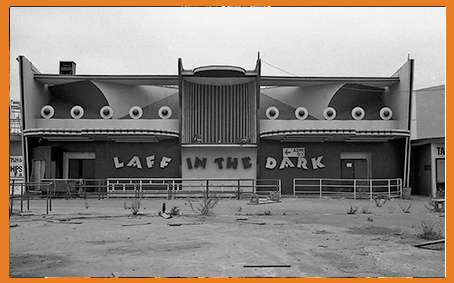The mummified body of Elmer McCurdy was found in the darkened fun house at the Nu-Pike Amusement Park in Long Beach, California, on December 7, 1976. His story shows how a mummy can become big business.
Ready to film an episode of The Six Million Dollar Man, a crew member named Chris Haynes working on the set noticed that the dummy hanging in one part of the set was real and not papier maché.
 He reported that it "was easy to see his body stitched up from his autopsy. Elmer's hands were covering his private parts. I tried to move the hand to show them that he ... wasn't made from papier maché. When I moved his arm, it snapped off in my hand, exposing bone and mummified muscles. I reported this to the Long Beach cop working on the show.
He reported that it "was easy to see his body stitched up from his autopsy. Elmer's hands were covering his private parts. I tried to move the hand to show them that he ... wasn't made from papier maché. When I moved his arm, it snapped off in my hand, exposing bone and mummified muscles. I reported this to the Long Beach cop working on the show.
Medical examiners and forensic investigators were called to determine who the mummy was and how it had died. They learned that the mummy was a man, and that he had been shot - quite a while ago, it seemed. He died of a .32-caliber gunshot wound; the bullet was old, manufactured between 1830 and 1920. When one medical examiner opened the mummy's mouth for other clues, he was surprised to find a 1924 penny and a ticket from the Museum of Crime in Los Angeles. That ticket and newspaper accounts helped police identify the mummy a robber known as Elmer McCurdy.
Here is his story:
In 1911 McCurdy joined a gang of outlaws. This band robbed a train near Coffeyville, Kansas, and then planned to steal a safe carrying over one thousand dollars from another train. On October 4, they stopped a train near Okesa, Oklahoma. But when they opened the safe they discovered that they had robbed the wrong train (the train with all the money was running two hours behind the train McCurdy and crew stopped): only forty-six dollars were inside. A shipment of whiskey improved their spirits. They took it and headed across the Oklahoma wilderness.
Two nights later, McCurdy stopped at a ranch. Drunk and tired, he fell asleep in a hayloft. Soon after, the three-man posse that was tracking him arrived. The trapped McCurdy began firing at the posse. They traded shots for an hour, then all was quiet. A young boy was told to go to the barn to ask McCurdy to surrender. McCurdy refused, reportedly telling the boy, "They can go to the devil." The fighting resumed, and McCurdy was later found dead in the hayloft.
His body was taken to a funeral home in Pawhuska, Oklahoma, but no one knew who McCurdy was. When nobody claimed the corpse, the undertaker embalmed it with arsenic and allowed people to see "The Bandit Who Wouldn't Give Up" for a nickel. Many carnival operators asked to buy the body from the undertaker, but he refused.
Almost five years after McCurdy died, a man from a nearby traveling carnival showed up and claimed to be McCurdy's long-lost brother. He indicated that he wanted to take the corpse back to California and give it a proper burial. Within two weeks, however, McCurdy was a featured exhibit with a carnival known as the Great Patterson Shows. Eventually, it wound up in the Long Beach fun house.
His body was eventually buried in April, 1977.

His grave can be found at the Summit View Cemetery in Guthrie, Oklahoma.

Copyright © James M. Deem. Originally published in How to Make a Mummy Talk (Houghton Mifflin, 1995). All rights reserved.

Other Mummy Stories by James M Deem
Curse of Tut's Tomb  Elmer McCurdy
Elmer McCurdy  The Franklin Expedition
The Franklin Expedition  Lemon Grove Girl
Lemon Grove Girl
Lindow Man, Bog Body  Nesyamun
Nesyamun  Rosalia Lombardo
Rosalia Lombardo
The Titanic Mummy  Tollund Man, Bog Body
Tollund Man, Bog Body
 Tollund Man, Bog Body
Tollund Man, Bog Body